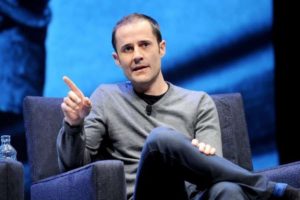Medium’s Content On COVID-19 Becomes Questionable Because What Can Be Right Today Can Go Wrong Tomorrow
Every citizen of every nation has become the prisoner of the novel coronavirus. Due to this outbreak, people have started losing their minds and much likely fall prey to misinformation. When every person is suffering due to this pandemic, misinformation is the last thing we wish for. But, how can normal people differentiate between the fact-checked, professionally-curated, verified information and random conspiracy theories? Had it been that simple, the spread of wrong information would have stayed in control. And, the hype for entertaining misleading information accelerates when reputed platforms like Medium publish them. Medium is one of the leading blogging platforms that witnesses both facts verified from experts and welcomes new ideas as well.
What has gone wrong?
Currently, the media is covering the statistics of COVID-19 as well as spreading awareness among people. Many experts have also published articles based on data gathered. But, when it comes to analyzing the seriousness of the coronavirus, a growth hacker and an epidemiologist are not the same. And, it all started getting worse when a Silicon Valley growth hacker, Aaron Ginn analyzed the situation in his way.
Aaron Ginn wrote an article based on his assessment of the coronavirus data. Medium posted the article and it spread like a wildfire. The article had certain hints of treating the deadly pandemic as an overhyped situation until Carl T. Bergstrom debunked it. Carl is an expert on infectious disease and criticized the article by a series of tweets thread.
He tried clarifying most of the misinformation by explaining it point by point. The article tried to dilute the gravity of the situation by explaining that it is following the bell curve. But, Carl said it doesn’t necessarily mean viruses will follow the bell curve unlike most things in nature. The coronavirus outbreak didn’t spread in every nation at the same time. And, speaking of less number of cases, the number of tests conducted varies for every nation and so is the population density. So, Medium removed the article immediately to stop the spread of misinformation.
Spot the correct information
But, amongst the misinformation spreading, Tomas Pueyo, another growth hacker posted a meaningful article on the coronavirus outbreak. The article was posted on Medium. This is one of the most famous articles on coronavirus with over 40 million views. Tomas set that the number of cases is growing exponentially and that it can take bigger shape in the future.
But, Tomas is no medical expert. Whatever he concluded in his article was a result of analyzing data and understanding research papers. A famous psychologist, Steven Pinker also shared his article. But, what is media without critics? Many people raised the question that he isn’t an epidemiologist so why should they support the idea. Tomas was delighted to hear it and said the article needs verification because he isn’t a medical expert. And, this rise in concern about what is right or wrong is what we need at this hour from common people.
Misleading information was taken down
An essayist, A. J. Kay who lives in Arizona started learning about the coronavirus situation. According to her, the experts were calling it highly transmissible which was not the scenario. But, what she failed to understand it testing started lately in the U.S. This means if anybody who was suffering from this disease was reported lately. By then it has already been spread to so many other people.
Without understanding any of this, she dropped an article, “The Curve is Already Flat”. The articles received 275,000 within the first 48 hours. But after a couple of days, she received a mail from Medium that her article was removed from the site. Medium informed her that the contents could have risked the lives of people so the Medium’s Trust and Safety team has reached the decision.
The conclusion
There are two categories of articles that are published on Medium. First, the ones that are fact-checked and written by professional journalists. The experts verify these articles and on the other hand, there are user-generated pieces. Due to the crisis, Medium now marks these user-generated articles is not fact-checked. Because it has the potential to put people’s health at risk. Moreover, the platform has amended “COVID-19 Content Policy”. Any article violating this set of the rule will be taken down without further explanation. Moreover, the figures are jumping exponentially every day. So, what theory might be valid today cannot be valid tomorrow.

Annasha Dey is an NIT student, who apart from studying engineering is also a content writer. She has a great interest in photography, writing, reading novels, and travelling as well. She is a foodie who loves socializing and hanging out with her friends. She is also a trained Kathak dancer and a big fashion enthusiast. Dey also loves watching TV series, which includes F.R.I.E.N.D.S. and Big Bang Theory. To be a better writer she prefers to read more



